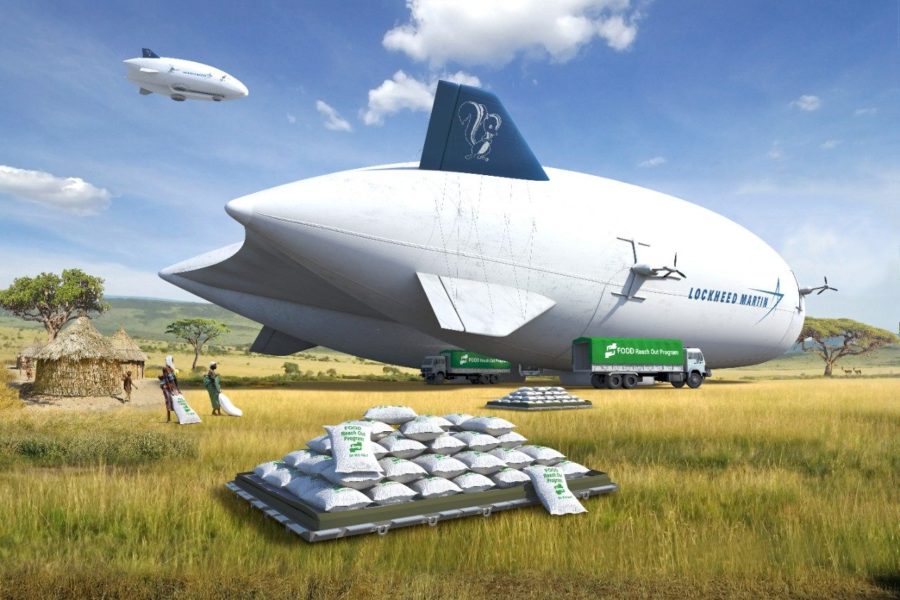The next phase of the Air Force’s long-term tanker recapitalization program may have some Lockheed Martin Skunk Works flavor, and the advanced development unit is looking ahead to the stealthy KC-Z competition and a potential lighter-than-air transport, Skunk Works Vice President and General Manager Jeff A. Babione said.
Speaking with reporters earlier this month ahead of the opening of a new production facility at Lockheed’s Palmdale, Calif., location at Air Force Plant 42, Babione said Lockheed Martin responded to USAF’s “bridge tanker” sources-sought notice in June with what he called the “LMXT” variant of the Airbus KC-30 tanker. He could not immediately say what the new “LMXT” branding stands for, but while Lockheed Martin’s aero unit is leading the hunt for USAF tanker work, Skunk Works is adding things to the proposal to make it more attractive.
Babione said Skunk Works will be “enhancing” the LMXT offering with additional survivability and countermeasures and “various other communications systems that have to be augmented,” as well as other improvements.
“I think we have a very compelling platform that we are putting forward,” Babione said. Skunk Works “is part of the team putting that proposal together when it comes to what kind of advanced technologies you want to put on the platform.”
The Air Force is seeking information from contractors who could offer a solution in the second part of its tanker recap program. Previously known as “KC-Y,” this phase will seek to buy between 140 and 160 non-developmental aircraft, with the first examples operational in 2029. The program could get formally underway as early as next year.
Boeing won the “KC-X” program with the KC-46, but the company’s checkered performance on the project has led to calls for a full-up competition for the second round. Boeing has lost more than $5 billion to date on the fixed-price program, and the huge foreign market for the tanker it anticipated has yet to materialize.
Airbus, offering the A330 Multi-Role Tanker Transport, has won most tanker contests since the KC-46 began competing, but most of the buys are for small lots. The Airbus aircraft actually won the KC-X contest at first, but the award was overturned after a protest from Boeing. The A330 is a larger aircraft than the KC-46. Lockheed Martin and Airbus signed an agreement to partner on future Air Force tanker competitions in late 2018.
The sources-sought notice said the non-developmental aircraft, also meeting “subsequent emerging requirements,” would have to be available within this decade.
Skunk Works is also looking to the follow-on KC-Z competition, which the Air Force has yet to define. The service generally has said KC-Z will need to be stealthy enough to operate in or near defended airspace; but it has not said whether it’s interested in a small stealth tanker like Boeing’s MQ-25 for the Navy, or something larger.
The KC-Z is an “exciting area we’ve been spending some level of [independent research and development] on over the past five years, on what does that look like,” Babione said.
“Think about how you would hide large quantities of fuel. Certainly there’s going to be a need to carry fuel in a contested environment. So what does that look like?” He noted that Lockheed Martin has put forward a number of “blended wing design” aircraft that look like a flying wing with a flying T-tail, which may suggest the company’s approach. Flying wings tend to have reduced radar cross section, and “those are the kind of technologies that we see as necessary for the KC-Z,” Babione said.
The advanced development unit is also still investing in its P791 airship concept, Babione said. Airships have the potential of “revolutionizing how we move large volumes,” particularly because airships don’t need a large infrastructure of runways. They could be particularly useful for opening up remote areas—such as African nations, Babione suggested—with routine commercial and passenger deliveries, in the absence of large airport facilities. That advantage alone could be “huge,” he said.
Airships could be “the catalyst to infuse commerce into certain parts of the globe … that need some kind of foundation to build an economy,” he said. “It’s a very interesting fit, and it’s ‘green’.”
The challenge is “breaking into that industry,” he said, adding that Skunk Works is “talking to several companies about what’s the best way to transition that technology.”
“We understand the math and science of it, it’s how do you make a business case?” he said. The pandemic has led some who would normally be willing to take a risk to be more risk-averse, and there will likely be some opposition to flying cargo airships over cities.
That risk aversion might increase if the aircraft were unmanned, he said.
“The business case is still valid, but the big question is regulatory. … Can you do it unmanned? There’s a huge advantage to operating one of these things autonomously. That would significantly reduce the cost of operating them.”
He noted that the problem with Boeing’s 737 MAX “has changed the certification process. It’s a challenge—not necessarily one that can’t be overcome—but it’s a challenge.”

